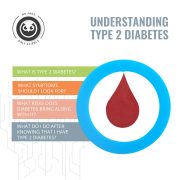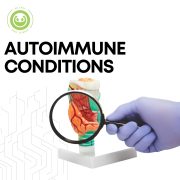Antidote to diabetes: A regulated lifestyle
Just a couple of weeks ago, we took apart type 1 diabetes as a condition and looked at the nature, diagnosis, and coping mechanisms of the condition. This time, we’ve taken up a more common type of diabetes, type 2 diabetes mellitus. We’ll look at the possible causes of the condition, what puts you at the risk of type 2 diabetes and what risk it puts you in, and ways to effectively deal with it once diagnosed. Read along!
What’s type 2 diabetes? How different is it from type 1?
Type 2 diabetes is a condition characterized by dysregulation of carbohydrate, lipid, and protein metabolism, and results from impaired insulin secretion, insulin resistance, or a combination of both.
Unlike the autoimmune condition of type 1 diabetes where the insulin-producing b-cells are destroyed by the body’s immune system, the insulin-producing cells are still intact in people with type 2 diabetes. However, the insulin secretion by these b-cells or insulin usage by the body is not optimal, and hence the dysregulated blood sugar levels.
The onset and symptoms of type 2 diabetes
Statistically, older adults are the ones commonly diagnosed with diabetes. However, in recent days, due to lack of physical activity, poor diet and alarmingly increasing obesity in children, the risk of them being diagnosed with type 2 diabetes has gone up multifold.
According to the International Diabetes Federation, one can be at high risk of being diabetic if one or many of the following conditions are met –
- Family history of diabetes
- Being Overweight
- Unhealthy diet pattern
- Not physically active
- Being an Older adult
- High blood pressure
- History of gestational diabetes
Apart from these, ethnicity and not having enough nutrition during pregnancy might as well be reasons for diabetes. The condition of type 2 diabetes usually sets in slowly and develops gradually, so there is no way to find out for sure other than monitoring your blood sugar levels at periodic intervals but there are a few symptoms that people experience.
Here are the symptoms of type 2 diabetes
- Excessive thirst and dry mouth
- Frequent urination
- Lack of energy, tiredness
- Slow-healing wounds
- Recurrent infections in the skin
- Blurred vision
- Tingling or numbness in hands and feet.
It is possible that you do not experience these symptoms yet have dysregulated or high blood sugar levels, so please make sure to get it tested regularly.
Diet myths around diabetes
Common beliefs are that if you’re diabetic, you can’t eat fruits, carbohydrates, or sweet food. This isn’t essentially true. While fruits, sweet food, and simple carbohydrates can all cause a spike in your blood sugar, consuming them as part of a wholesome meal with fiber, vitamins, and minerals help. What matters is portioning your meals effectively and laying down on processed sugar and keeping your plate balanced.
Myths like ‘diabetes are caused by consuming a lot of sugar’ and ‘you can control blood sugar levels by consuming bitter food’ are all results of little to no information about the condition. Please understand that diabetes is caused by impaired insulin secretion or acceptance, and blood sugar levels can be kept under control by a regulated, portioned diet and even insulin treatment in select cases.
What are the types of diabetes?
Apart from the most common type 2 diabetes and the lesser-known counterpart, autoimmune diabetes or type 1 diabetes, there are a few more types as well.
- Diabetes is caused by diseases of the exocrine pancreas, such as pancreatitis, trauma, infection, pancreatic cancer, and pancreatectomy.
- Diabetes due to endocrine disorders that cause excess secretion of hormones that antagonize insulin.
- Drug and chemical-induced diabetes from drugs that disrupt insulin secretion or insulin action.
- Infection-related diabetes is caused by viral infection associated with beta-cell destruction.
- Uncommon specific forms of immune-mediated diabetes (e.g. immunological disorders other than those that cause type 1 diabetes).
- Diabetes is caused by other genetic syndromes (i.e. Prader- Willi syndrome, Down’s syndrome, Friedreich’s ataxia).
How do I tackle diabetes?
Here’s a hard-to-swallow pill – If you’ve been diagnosed with diabetes, it is most likely to become part of your life after. So, tackling diabetes is more of a lifestyle change, rather than a temporary measure.
Balanced meal patterns, regular physical activity, and medications will alone solve half your problems, and minimize diabetes-propelled health complications. Keeping your cholesterol, body weight, and blood sugar levels at optimal levels and monitoring them regularly can also help.
Yoda is here to help you fight! Call us up and we’ll talk more about diabetes-friendly diet plans and more information on the condition. Stay informed, stay fit.




